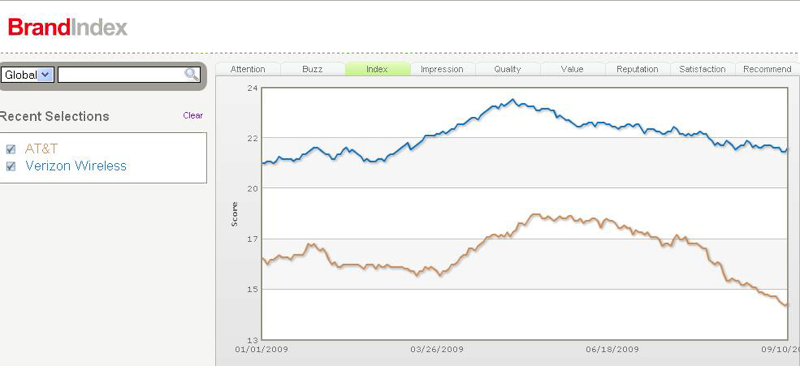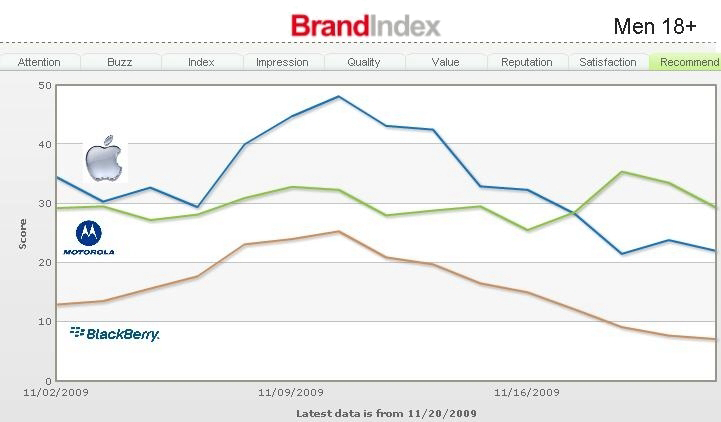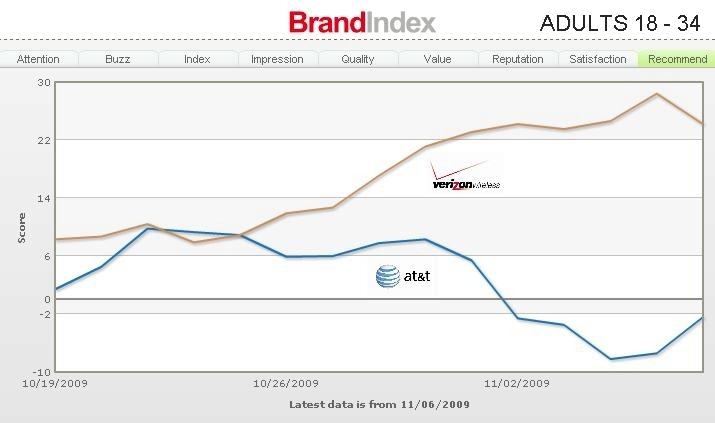The iPhone Killer: Time
25 Nov 2009As the iPhone has grown, every new Smartphone has been simultaneously lauded as an iPhone killer (by eager supporters), then blasted for failing to do so (by cynical bloggers). But that’s okay, I’ve finally figured out what I think will be the iPhone Killer. As you may have guessed from the title - Time. Time takes its toll on all things, and I think the iPhone is rapidly nearing the end of its position of prominence.
First off, the facts. While the iPhone is a popular device, depending how you slice your market demographics it ranges from “unquestioned overlord” to “mid-volume runner”. Yes, it has sold more than any single model, but most manufacturers don’t make only one model. In fact, may people are lying with statistics, treating the iPhone as only one model when in fact six exist in the US. There’s the 4gb and 8gb versions of the 2G, the 8 and 16gb versions of the 3G, and the 16 and 32gb versions of the 3GS. Blending all of these into one number, spanning multiple model years and often duplicate customers is misleading at best.
Apple’s competitors in the space aren’t exactly doing poorly, either. Many other mobile OSs have GROWN in size since the introduction of the iPhone. Symbian, Blackberry, and Windows Mobile have all increase their sales volume and revenues since 2007. On top of that, the removal of Palm’s PalmOS models from the market and the introduction of the Sprint-only WebOS models has left a gap filled largely by Apple and RIM. Even the aging Windows Mobile has grown, despite no major changes to the OS since the May 12 ‘05 release of Windows Mobile 5.
But all of that is not to discount the impact Apple has had. Devices are more powerful, rich application libraries are a requirement, and let’s not forget that their rapidly-dissolving relationship with Google gave rise to Android, which is already making significant gains in Apple’s tech-savvy elite, attracting developers and power-users and leaving Apple to scrape the bottom for new customers.
Take a look at the three images below. See what they say about the iPhone’s perception in the market. All images come from BrandIndex, via AppleInsider.com

First, this graph shows the perception of AT&T vs. Verizon, following the launch of the iPhone 3GS. Notice the sharp downturn in both companies, with AT&T’s being noticeably sharper. After the launch of the 3GS on June 18, people began to notice the struggling impact of a data-intensive device on AT&T’s aging, poorly-managed 3G network. Many users reported losing 3G coverage even while in areas AT&T was supposedly offering great coverage. While voice worked, AT&T’s data network was sorely lacking.

Next, take a look at the brand perception of Apple vs. Motorola leading up to the Droid launch, specifically among men aged 18+. Droid’s

Lastly, look at the perception of AT&T vs. Verizon in the weeks leading up to the Droid launch. AT&T was never “liked”, but it hasn’t historically been much worse off than Verizon. Now there’s an almost 40 point difference - most likely attributable to the numerous “There’s a map for that” and “Droid does” ads. AT&T, the only source of the iPhone today, is tanking in popularity and public perception among adults. Why would you want a cool phone if it’s on the nation’s worst network?
When you put all these together (as I’m sure someone at Apple has) you see a pattern emerge: the iPhone isn’t really seen as a cutting-edge device anymore. It hasn’t fundamentally changed in 3 years. Sure, memory bumps are nice and getting the features that have existed on other phones for a decade is a welcome addition, but it’s not revolutionary anymore. In fact, for the tech-elite, the cutesy, childish UI is no longer a novelty, but a frustration. For top-tier developers, having a locked-down platform with an unpredictable, often irrational gatekeeper is unforgivable. And for everyone else? AT&T sucks more than the iPhone can make up for any longer. AT&T has not invested in its 3G networks (coverage or infrastructure), and iPhone users once proud of their device’s web-surfing capabilities are now behind, from a data coverage, screen resolution, and technology standpoint.
Will any one device crush the iPhone? I don’t think so. I’m pretty sure it’ll die the way Apple’s OS did – the death of a thousand tiny cuts. You’ll have a small group of users who are willing to trade the simplicity of a locked-down, highly limited environment for poor quality coverage, a less capable device, and a single form-factor.
If I had to guess though, Apple will probably react by trying to diversify, but it’ll be too little too late. The iPhone exclusivity contract will last a few more years, and they’ll release one or two more devices. Maybe one with a keyboard, maybe one with a bigger, sharper screen, but once they do that, the simple elegance of “every app on every phone” is gone.
Then they’ll release a CDMA version to Verizon and Sprint, but no one will care. Sure, there will be blog hype (as their is around a lot of what Apple does), but for the average consumer it won’t matter, and it won’t translate into big numbers. Mostly, you’ll get people who hate AT&T jumping back to their original provider (Verizon), or switching to Sprint for the unbelievably cheap internet coverage they offer.





